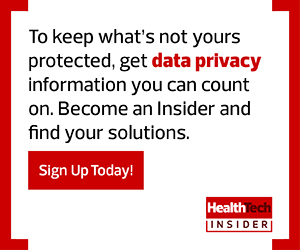When it comes to providing high-quality medical care, clinicians can’t outsource human touch and personal intuition.
The evolution of predictive analytics, however, is giving providers a helping hand to do their jobs even better. Deep access to pools of patient data can be leveraged to adjust care delivery models, improve patient outcomes and strengthen a hospital’s bottom line.
Momentum is growing: 60 percent of healthcare executives are now using predictive analytics within their organizations, according to a 2019 survey from the Society of Actuaries. That’s a 28 percent increase from the prior year.
Delivered at the point of care, detailed insights can be lifesaving. Penn Medicine, for example, uses a program that gleans data from a patient’s electronic health record and a machine learning algorithm to develop a prognosis score upon arrival. The goal? Determine high-risk individuals and adjust their care accordingly.
Likewise, data-driven efforts in cancer care help ensure continuity and reduce errors when prescribing chemotherapy and other treatments. “Predictive analytics helps us be compliant with the most recent evidence-based guidelines,” Dr. Debra Patt, an executive vice president at Texas Oncology, tells HealthTech.
Predictive Analytics Help to Maximize Your Value
Beyond saving lives, the effort can reduce operating costs. Nearly two-thirds of executives forecast that predictive analytics will save their systems 15 percent or more over the next five years, the Society of Actuaries survey found.
Consider the results at Bergen New Bridge Medical Center, which struggled to handle unexpected midday rushes in the emergency department. By launching a data analytics program, the Paramus, N.J., organization was able to determine that adding an 11 a.m. shift could alleviate the bottleneck. The effort, bolstered by a robust IT modernization effort, also reduced the need for overtime pay and calling in extra staff on the fly.
Vanderbilt University Medical Center deployed predictive analytics to forecast the number and timing of expected surgeries so fewer staffers are on the clock during slow periods. Doing so allows the health system to schedule more efficiently, recouping costs that equate to the salaries of 2.8 anesthesiologists.
Similarly, a custom web-based app helps Envision Physician Services — a multispecialty medical group working with more than 900 facilities — identify patient traffic patterns and staff hours to better plan for unexpected ebbs and flows across locations. It’s a great example of working smarter, not harder.
There's Better Care Yet to Come
Although much progress has been made, we’re only at the starting line.
I’m encouraged by developments such as an artificial intelligence algorithm being trained by Stanford University researchers to screen chest X-rays in a matter of seconds and detect 14 different pathologies with an accuracy rivaling that of radiologists. The tool, developers say, could help triage patients based on need.
Patt, who co-authored research published last year in the ASCO Educational Book, cites “immense” potential for analytics to guide efforts in population health management, radiomics (computations of quantitative data from medical scans) and pathology.
Regardless of application or targeted ailment, predictive analytics will continue to positively shape healthcare delivery and patient outcomes. The movement doesn’t require a crystal ball to reveal big potential ahead.











